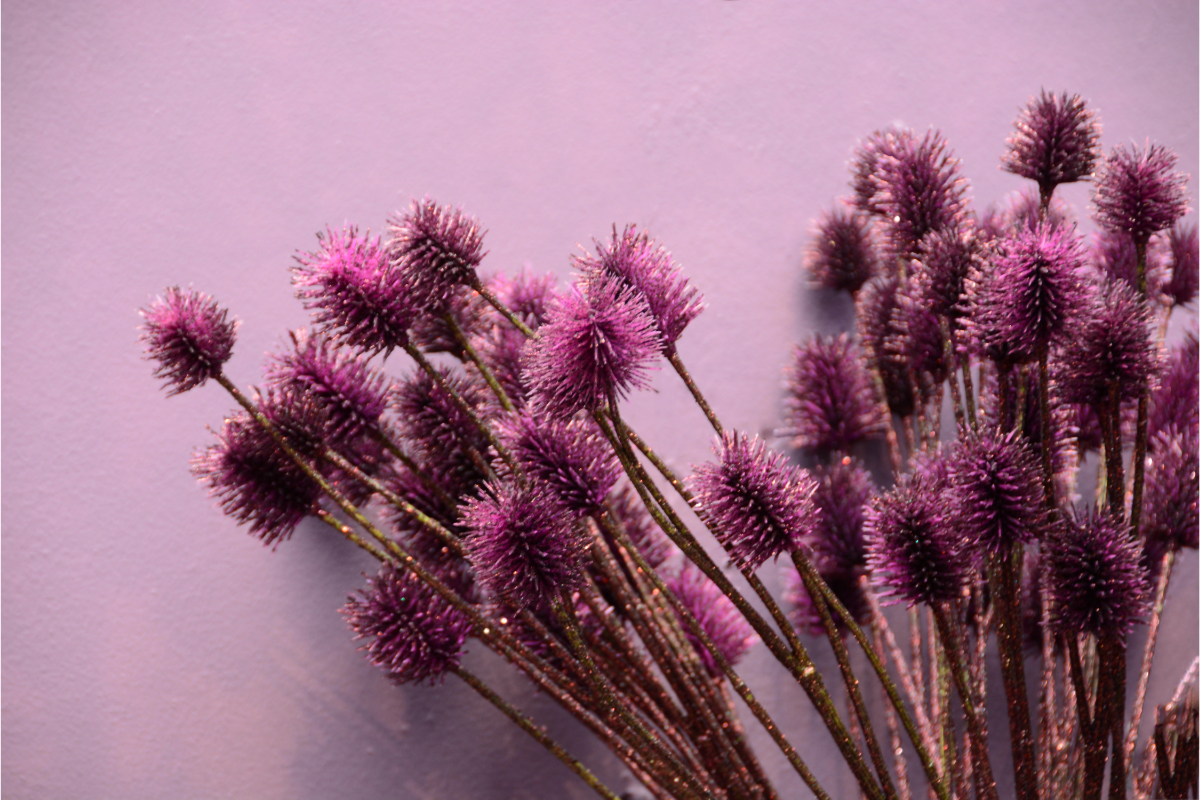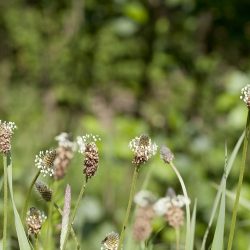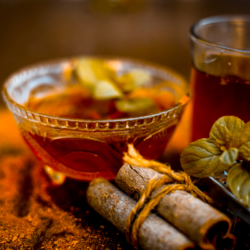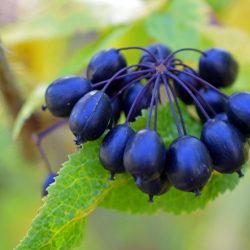Hyssop is one of the mystical plants of antiquity. Its name derives from the Greek “azoh” or “holy herb”.Hyssop was considered a sacred herb by the Hebrews, who regarded it as “purifying”. Hippocrates, Galen and Dioscorides, each in their own time, extolled the properties of this plant. It spread to Europe from the 12th century, thanks to the monks. And let’s not forget that bees passionately gather hyssop flowers… which make delicious honey! The essential oil is used in liqueurs (Chartreuse, Bénédistine).
In ancient times, hyssop was used to treat bronchitis and pleurisy, but it was also a sacred herb. Hyssop is mentioned in the Bible for its use in purification rituals. During the Middle Ages, its pulmonary virtues were attested. In the 9th century, hyssop was used as a fumigant to combat plague epidemics. In the 17th century, it was used to make an expectorant syrup to combat coughs and various infectious respiratory conditions.
Latin name:
- Hyssopus officinalis L.
Botanical family:
- Lamiaceae
Producing organ:
- Flowering aerial parts
Known or presumed mode of action:
- Diterpenes are principles that are probably active in the pulmonary sphere (e.g. Grindelia grindelic acid, marrubiin from marrubium, ground ivy, hyssop, etc.), marrubiin is a serotonin antagonist
A little history:
- Perfume once used to purify temples
- Hippocrates already recommended it for bronchial ailments
- Widely used in the Middle Ages, recommended in the “Regimen sanitatis salernitarum” for lung ailments
- Vulnerarius comes from vulnus -eris wound => vulnerarius = suitable for healing wounds
From ancient times to the present day, countless people have taken an interest in hyssop. Depending on the period, it either reached its apogee or fell out of favour, its virtues forgotten. Doctors, botanists, astrologers, etc. – many have found something to say or say again about it, sometimes in a plethora of ways. But, as the old saying goes, “anyone who competes with the virtues of hyssop knows too much”.
In the Middle Ages, hyssop stood out above all for its culinary and medicinal uses. Often mentioned in Taillevent’s Viandier, hyssop seems to have been one of the favourite plants of the author of the Mesnagier de Paris. Among other things, he suggested a recipe for mutton beans seasoned with parsley, sage, mace and hyssop. As for the medicine cabinet, it’s always full of this beneficial plant. It was used by some of the greatest names in the field, including Rhazès, who recommended fumigation as an antiseptic in times of plague. Trotula, from Salerno, recommended hyssop: “for a cold cough, use wine or cooked ysope and dried figs”.
“Hyssop, with success, purges phlegmatics, says still this famous school of medicine; boiled with honey, helps pulmonics; and by a bright colour of the complexion corrects pallor”, the last property taken from Dioscorides, also conveyed by Macer Floridus and Albert the Great, who did not neglect hyssop as a respiratory remedy (catarrh, cough) and digestive remedy (constipation, flatulence, intestinal parasites), hyssop was also used by Dioscorides to treat pain in the teeth and ears, but they completely overlooked the fact that hyssop was also an eye remedy, as Hildegarde de Bingen pointed out. Sensitive to the therapeutic power of hyssop on the lungs, she nevertheless preferred its action on the gastric sphere, saying that “hyssop is more useful for those who suffer from this illness than for those who suffer from the lungs”.
Hildegard also took great care of the vocal cords of her choir of nuns, using hyssop when they were prone to hoarseness. Lastly, in order to perpetuate the rites of sprinkling, she used hyssop on a disease that was considered divine punishment in the Middle Ages: leprosy.
In the sixteenth and seventeenth centuries, with Matthiole, Tragus, Fuchs, Lobel, Simon Paulli, Schroder and others, the earlier prescriptions for hyssop were perpetuated, with particular emphasis on its effectiveness in treating lung ailments. However, some of them brought a little innovation, for the better, such as Paulli, who praised the usefulness of hyssop for very violent blows and bruises (such as horse hoofs), and for the worse, with Matthiole, who claimed that “hyssop improves the condition of epileptics, especially when taken seven evenings in a row”!
Unsurprisingly, when it comes to hyssop, we come across some very well-known names, such asHippocrates, who gave the plant a cure for pleurisy, a lung ailment that was to seal hyssop’s fate as a major respiratory remedy, a virtue that was to be extended to lung inflammation, inveterate coughs and bronchial catarrhs. The evidence is very clear: hyssop purges the lungs of its moist humours and, what’s more, evacuates parasites from the intestines.
But whether this is the hyssop we know is open to question. the French botanist Joseph Pitton de Tournefort (1656-1708) said: “Alas,” he exclaimed, “it would be better to say that hyssop is perhaps known to no one”, roundly criticising the descriptive gaps in the plants spoken of in Antiquity, or rather, not spoken of, according to the principle of satis notum.
Although the botanical portrait of hyssop is absent from the Materia medica, it is nevertheless possible to recognise a faithful therapeutic figure in the passage that follows: “It has the virtue of drying and warming. Cooked with figs, water, honey and rue, and then drunk, it benefits lung defects, old coughs, chest tightness, catarrh and asthma. It kills body worms […]
It is eaten with crushed fresh figs to loosen the stomach […] It gives a good complexion […] Applied with hot water [editor’s note: in the form of a decoction], it removes bruises caused by blows […] A decoction of hyssop made with vinegar (gargled) removes toothache. The vapour from this same decoction […] resolves ear infections”. All of this is very admirable and sets a valuable benchmark.
The Latins also made much of hyssop, whether as a doctor(Scribonius Largus), agronomist(Columella) or gastronome(Apicius). In cooking, hyssop, renowned as an aromatic, was part of the Roman muria, a mixture of parsley, saffron, dill, ginger, lovage, pepper and salt.
But the Greek hyssôpos and the Latin hyssopus betray an oriental origin. Both terms seem to be inspired by the Arabic azzof, “sacred plant”, and the Hebrew esobh, the equally sacred and healing plant of the Hebrew Nehemiah. It is this esobh that is mentioned in the Bible, particularly inExodus (XII, 22). The blood is kept from the sacrifice of a lamb: “You shall take a bunch of hyssop and dip it in the blood that is in a basin, and you shall sprinkle the blood that is in the basin over the lintel and the two doorposts; none of you shall leave the door of your house until the morning”.
This was to ensure protection from the “destroyer” and to avoid the tenth plague of Egypt, i.e. the death of newborn babies. As for the lamb’s flesh, “they shall eat it with unleavened bread and bitter herbs”. These bitter herbs are still part of the Jewish Passover meal, through one of its dishes, maror. This is not hyssop, but horseradish, among other things. During the same meal, hyssop is also used in karpas. This is a dish flavoured with this herb: “the karpas is soaked in salted water as a seasoning. All populations recognised the antiseptic properties of salt very early on. It is often used in exorcisms to drive away devils. Here, the salt water symbolises the tears shed in Egypt.
Once again, we see that hyssop is a hunter, expelling bad humours and vermin, as well as inappropriate emotions and feelings.
As is often the case, liturgical uses flirt with magic as soon as they slip into the secular world. “Its small, tree-like silhouette has been seen as a miniature tree, a summary of the plant world, an offering to God in a small volume of all his creation. It has always been used to sprinkle lustrous water on offerings, sacrifices and even people in need of purification.
Magic uses it to ward off any presence hostile to the work being accomplished. For, if tradition is to be believed, it abhors demons”. These are practices that have long been perpetuated, since Jean-Baptiste Porta recommended sniffing hyssop to ward off love spells, and more recently, in the 19th century, village women in the province of Palermo harvested hyssop on 25 April, “a preservative that keeps the evil eye and other magical influences away from the house”.
Hyssop and traditional Chinese medicine
Dr Cazin summed up what traditional Chinese medicine has to say about hyssop: “Hyssop can be useful in all cases where the functions of life need to be stimulated”. And traditional Chinese medicine confirms it: this plant is an energy tonic for most meridians. Erika Laïs states that “hyssop strengthens the stomach and digestive tract, as well as the lungs and entire respiratory system”. Three meridians emerge from this single sentence: the Lung / Large Intestine pair, linked to the Metal element, and the Stomach meridian, governed by the Earth. Each of these meridians is affected by physiological disorders:
- Lung: lung disorders (coughs, bronchitis, asthma, colds, chills, voice disorders), skin disorders (eczema, dermatitis), disturbance of the immune system.
- Large intestine: intestinal disorders (constipation, abdominal pain), skin disorders (eczema, dermatitis).
- Stomach: digestive problems, gastric pain, inappetence.
Now let’s look at the psychological and emotional disturbances that can be caused by the malfunctioning of these three meridians:
- The large intestine is an excretory meridian, it eliminates. Under normal circumstances, it avoids stasis. In other words, states of repressed stress and tension. In these cases, we are unable to let go of ballast. Hyssop is interesting in that it removes feelings of anxiety and nervousness. In fact, thanks to hyssop, this meridian regains its two major strengths: relaxation and indulgence.
- The Lung meridian manages exchanges between the surrounding world and our own inner world. Playing the role of an airlock, it only lets in what we need. For example, the air we breathe filters out pollen, dust, microbes, etc. So, if this meridian is working well, you’ll be able to firmly oppose the interference of people who are too curious, by setting strict limits on what you want and what you don’t want in relation to this crowd who would be delighted to invade you if you ever let your guard down. Which is what happens. For example, if the immune system – our defence system against the outside world – is disrupted, infection is guaranteed. It’s the same with a lack of willpower, courage or breath. You can’t defend yourself any more, you can’t fight off intruders, those devilish people who are out to get you, or your time and/or money, among other things. Boundaries are shattered, we no longer feel ‘whole’, that is to say with integrity, and the invaders, like vulgar microbes that are nonetheless dangerous, move in, intruding on our deepest, sacred and symbolic territories. Every human being is their own church, their own place of worship, and their duty is not to let a desecrator enter. If you ever feel yourself wavering on any of these points, don’t delay. Use hyssop to reinflate the Lung meridian. Firstly, because it is tonic, immunostimulant and has marvellous anti-infectious properties. So, if it’s anti-infectious, it’s also anti-infecting.
- The Lung meridian is without doubt the one for which hyssop is most useful. This is much less the case for the Stomach meridian, which is only of secondary importance. The strengths of this meridian are abundance and tranquillity. Somatisation in the stomach may be a sign that the Stomach meridian is suffering some damage. This can be expressed by experiences in the area of emotions and feelings. In such cases, you feel overwhelmed, unable to finish something you’ve started. So much so that it becomes an obsession that can turn into delirium. At this stage, there’s no point in forcing the issue. Better to use hyssop. As a regulator of the central nervous system, it will put everything back in order.
Hyssop and medical astrology
According toHenri Corneille Agrippa, hyssop is a re, and according to Anne Osmont, dominated by Jupiter. Let’s see who’s right.
Cancer, the sign of Water, is dependent on the action of the Moon, and may be well advised to use warm hyssop. The colours associated with the Moon, such as very pale blue and midnight blue, appear to be a clue. However, it is above all Jupiter that is most reminiscent of the colour of hyssop flowers.
Cancer dominates the chest and stomach, recalling two of the meridians we discussed earlier. Cancer natives are therefore prone to digestive disorders, for which hyssop is recommended. All the more so when you consider its vermifuge properties and the Lunar’s tendency to parasitise the intestinal tract. On the respiratory side, Cancer’s lungs are somewhat fragile (asthma, coughing, excessive phlegm), and they are sensitive to cold. All this adds to its lunar value, which plays a part in other disorders affecting Cancerians: depression, asthenia, neurasthenia, hypotension.
The Jupiterian star affects two zodiac signs, Sagittarius and Pisces. Hyssop is of no help to Sagittarius, a fire sign prone to high blood pressure. Hyssop is hypertensive and should therefore be avoided. On the other hand, for the other Water sign, Pisces, this plant is beneficial. This sign is characterised by fragile respiratory and intestinal tracts. It is prone to respiratory allergies (hyssop is anti-asthmatic), and is prone to difficulty expectorating. The result is bronchial congestion due to insufficient elimination of secretions, colds, catarrh, etc., all things for which hyssop excels. Finally, the Pisces sign is notable for anaemia, neurasthenia and depressive states, for which hyssop can be used.
To sum up, hyssop is as much a lunar plant as a Jupiterian one (with the exception of Sagittarius).
With a pleasant fragrance when their leaves are gently crumpled, hyssop evokes a honeyed scent mingled with pepper. Their dry, arid, hot, bitter and pungent flavour is somewhat reminiscent of the soils in which these plants thrive.
Under decree no. 2007-1198, essential oils on list B must be supplied by prescription. These essential oils are only available to the pharmaceutical industry. Their potential undesirable effects (neurotoxicity, causticity, etc.) outweigh the expected benefits.







